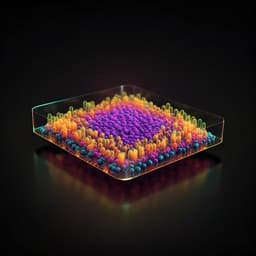
Engineering and Technology
A magnetic levitation based low-gravity simulator with an unprecedented large functional volume
H. Sanavandi and W. Guo
Discover how innovative Magnetic Levitation-based Simulators (MLS) are revolutionizing low-gravity research! Conducted by Hamid Sanavandi and Wei Guo, this study showcases an MLS design that surpasses previous capabilities, achieving functional volumes over 20,000 µL while minimizing energy consumption. Perfect for simulating Martian gravity, the future of space research is now at hand!
Playback language: English
Related Publications
Explore these studies to deepen your understanding of the subject.







